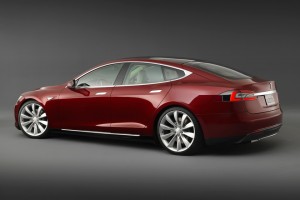To recount the spat, after the Times published Broder's story, Musk took umbrage both in an interview on CNBC and in a blog post in which he accused Broder of "constructing a no-win scenario for any vehicle, electric or gasoline." Broder, Musk said, "simply did not accurately capture what happened and worked very hard to force our car to stop running." Musk claimed Tesla's logs of Broder's trip contradicted the reporter's account of the steps he took to keep the car running, and that he acted "expressly against the advice of Tesla personnel and in obvious violation of common sense" on the last part of the trip.
Musk also claimed that Broder was predisposed to write negatively about the vehicle, as he had displayed in his previous writing an "outright disdain for electric cars."
"When the facts didn’t suit his opinion," Musk wrote, "he simply changed the facts."
In a response, Broder defended himself by saying, as he did in the original article, that he spoke numerous times during the trip to Tesla personnel in trying to solve the charging problems. He also rebutted or at least addressed point by point Musk's accusation that the car's logs contradicted Broder's account.
The Atlantic Wire also took Musk to task in a post analyzing his critique of the reporting. The title: Elon Musk's Data Doesn't Back Up His Claims of New York Times Fakery. The conclusion:"Broder may not have used Musk's car the way Musk would like, but Musk is, for now, overhyping his case for a breach of journalism ethics."
And Mashable's Chris Taylor put up a post on Friday called "Why This Can't End Well For Tesla." Taylor's take:
If the Model S only works if you drive below the speed limit between charging stations, if you have to charge it all the way every time, if you need to follow the advice of Tesla PR reps to the letter at every juncture — whether or not the writer did — then it is a car that is asking for a perfect human to operate it.
Tesla shares finished off more than 3 percent today.
